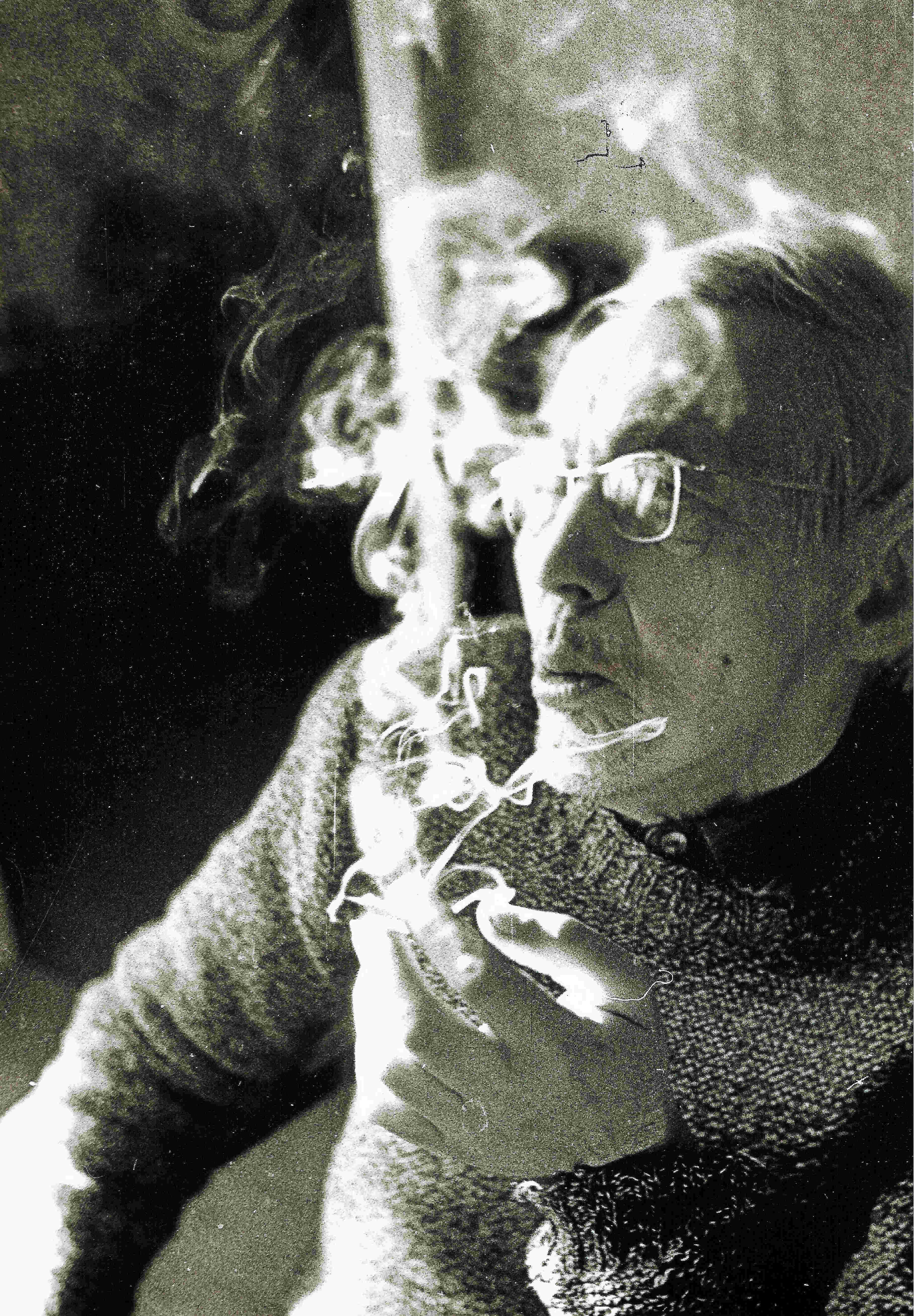
Leo Anvelt
Leo Anvelt (official name Leopold Anveldt, 4 September 1908–3 June 1983) was a writer, literary historian, translator and philosopher.
Anvelt was born at Türi, Järvamaa County, in the family of a shopkeeper. From 1917–1923, he attended Türi primary school, progymnasium and school of continuing education, from 1923–1926, at Tallinn Gymnasium of Technology where one of his classmates was Uku Masing. In 1926, Anvelt entered the University of Tartu where he studied philosophy and theology. He graduated from the university cum laude in 1933. In 1936, he acquired a Master of Philosophy degree there with his thesis Jumala mõiste Spinoza õpetuses (‘The Concept of God in Spinoza’s Teaching’). In 1941, invited by Kaarel Ird, Anvelt worked for a short time as dramaturge of the Vanemuine theatre. During World War II, Leo Anvelt was recruited to the German army for a short time. From 1945–1946, he worked as an editor for Teaduslik Kirjandus publishers. In the 1950s, he did translations for the Estonian Literary Museum. From 1963 until retirement in 1969, he worked as a researcher at the manuscripts department of the Estonian Literary Museum. Anvelt was a member of the Estonian Writers’ Union from 1938. During the repressions in 1950, he was expelled from Writer’s Union of the Estonian SSR. His membership was restored in 1969. One of Leo Anvelt’s hobbies was water-colour painting.
Anvelt made his debut with poems in the journal Looming in 1925. His first novel Viirastusi valges öös (‘Apparitions in White Night’), which received the third prize at the novel competition of Loodus publishers, appeared in 1928. Critics have found in retrospect that it was an unusually mature book for a barely 20-year-old author. Leo Anvelt’s second novel Eluhirm (‘Fear of Life’) was published in 1936. Anvelt’s third and last novel Vabanemiskatse (‘Attempt to Break Free’) appeared posthumously in the journal Looming in 1984.
The protagonists of all the three novels can be considered the author’s alter ego; in the first book he is a young boy, in the second – a man of marrying age, in the third – an aged, timid and lonely, honest and religious, sceptical, somewhat melancholy and, at the same time, ironical man. The schoolboy Rein Endise longs for safe social ethicality but cannot achieve it in practical life. The student Vait Vilmer suffers from fear of his own imperfection, particularly sexual inadequacy. The delusions of illness and fading away suppress him into the category of marginalised people. The old schoolteacher Saatre, who wishes to settle accounts with his past, tries to sublimate the tension of his search and doubts through writing, but nothing comes of it. The novels keep alternating between impressionist, mundanely realist and deeply psychological passages. In the novel Viirastusi valges öös, some common features have been found with Reed Morn’s novel Andekas parasiit (‘The Talented Parasite’). Critics have also noticed similarities with Aadu Hint’s novels of the 1930s. Leo Anvelt is considered quite an exceptional author in Estonian cultural history, as he felt compelled to write only novels with a philosophical texture.
Anvelt has also written short prose. In 1966, the journal Looming published his longer story Uidang mitme tundmatuga (‘Roaming with Several Strangers’). In 1983, the newspaper Sirp and Vasar posthumously published his short story Kohtumine võimatuga (‘Meeting the Impossible’). In 1987, Anvelt’s poems and short stories were published in the collection Uidang mitme tundmatuga (compiled by Hando Runnel).
Leo Anvelt has translated historical and philosophical literature and fiction from German (A. Schopenhauer’s Lebensweisheit), from English (J. Swift’s Gulliver’s Travels, J. Galsworthy’s The Island Pharisees, J. Conrad’s The Nigger of the ‘Narcissus’ and Heart of Darkness, J. London’s Love of Life, H. G. Wells’ The Outline of History, etc.), from Latin (Virgil and other classics of Roman poetry) and from Russian. As an experienced translator, he had a feeling for the authors’ idiosyncratic style. In the 1930s, Anvelt published the biographies of W. E. Gladstone and Aristotle.
From the 1950s to the end of his life, Anvelt translated the correspondence of Estonian and Estophile cultural figures (Fr. R. Kreutzwald, J. H. Rosenplänter, O. W. Masing) from German into Estonian. From the 1960s, he was engaged in compiling and commenting the publication of O. W. Masing’s heritage in letters. In 1979, he published the collection of articles O. W. Masing ja kaasaegsed (‘O. W. Masing and His Contemporaries’) which sheds light on the mental culture in the present-day territory of Estonia in the first half of the 19th century.
In 1988, Leo Anvelt posthumously received the Friedebert Tuglas Short Story Award for his story Külm heldus (‘Cold Generosity’).
L. P. (Translated by I. A.)
Books in Estonian
Novels
Viirastusi valges öös. Tartu: Loodus, 1928. 221 lk.
Eluhirm. Tartu: Noor-Eesti, 1936. 256 lk.
Viirastusi valges öös; Eluhirm; Vabanemiskatse. Tallinn: Eesti Raamat, 1993. 518 lk.
Short prose and poetry
Uidang mitme tundmatuga: jutte ja luulet. Tallinn: Eesti Raamat, 1987. 236 lk.
Biographies
William Ewart Gladstone: liberaalne inglise riigimees. Tartu: Eesti Kirjanduse Selts, 1935. 151 lk.
Aristoteles: vana-aja universaalsemaid teadlasi. Tartu: Eesti Kirjanduse Selts, 1938. 140 lk.
History of literature
O. W. Masing ja kaasaegsed: lisandusi nende tundmiseks. Tallinn: Eesti Raamat, 1979. 229 lk.
History
Egiptuse templeis ja hauakambreis. Tartu: Loodus, 1935. 31 lk.
Igapäevasest tööst Vana-Egiptuses. Tartu: Loodus, 1935. 24 lk.
Keskaegne külaelu Lääne-Euroopas. Tartu: Loodus, 1936. 36 lk.



